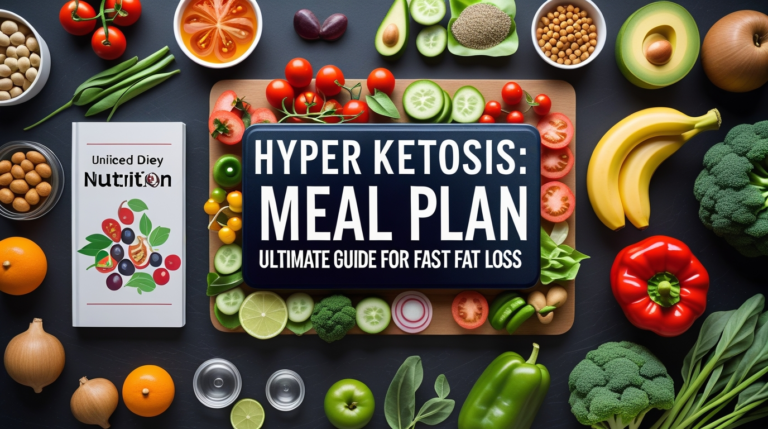Understanding the impact of diet on your body is crucial, especially when going through significant life transitions. As you approach menopause, your body undergoes numerous hormonal changes that can affect your overall well-being. This phase, known as perimenopause, is a critical time for reevaluating your nutritional needs. In this blog post, we’ll explore how a well-structured perimenopausal diet plan can help you manage hormonal changes with food, alleviating some of the common symptoms and promoting a healthier lifestyle.
Understanding Perimenopause and Its Impact
Perimenopause is the period leading up to menopause, where estrogen and progesterone levels fluctuate, causing a range of physical and emotional symptoms. This transitional phase can last for several years and often begins in a woman’s 40s. Understanding the body’s changes during this time is crucial in tailoring a diet that supports your health.
Common Symptoms of Perimenopause
During perimenopause, many women experience symptoms that can range from mild to severe. Some of the most common symptoms include:
- Hot flashes and night sweats
- Irregular periods
- Sleep disturbances
- Mood swings
- Weight gain
By acknowledging these symptoms, you can create a diet that addresses specific needs and alleviates discomfort.
The Role of Diet in Managing Hormonal Changes
Nutrition plays a pivotal role in managing the symptoms associated with perimenopause. A well-balanced diet can not only help regulate hormone levels but also support overall health and well-being.
Key Nutrients for Hormonal Balance
Incorporating certain nutrients into your diet can greatly impact your ability to manage hormonal fluctuations:
- Phytoestrogens: Found in soy products and flaxseeds, these plant-based compounds can mimic estrogen in the body, helping to balance hormone levels.
- Omega-3 Fatty Acids: Present in fatty fish and walnuts, omega-3s are renowned for their anti-inflammatory properties and support for heart health.
- Calcium and Vitamin D: Essential for bone health, these nutrients can help prevent osteoporosis, a common post-menopausal condition.
Incorporating these nutrients into your meals can be a proactive step toward mitigating perimenopausal symptoms.
Designing Your Perimenopausal Diet Plan
Creating a diet plan that is tailored to the perimenopausal phase involves several key components:
Emphasize Whole Foods
Whole foods are unprocessed and unrefined, making them excellent choices for a healthy diet. They provide a wealth of nutrients that can support hormone balance and overall health:
- Fruits and vegetables: Rich in vitamins, minerals, and fiber, these should form the basis of your diet.
- Whole grains: Choose whole grain bread, rice, and pasta to increase fiber intake and support heart health.
- Lean proteins: Incorporate sources like chicken, fish, tofu, and legumes to maintain muscle mass and support metabolism.
Prioritizing whole foods can support a nutrient-rich diet essential for navigating hormonal changes.
Limit Processed Foods and Sugar
Processed foods and sugar can exacerbate perimenopausal symptoms by causing blood sugar spikes and contributing to weight gain. Reducing these in your diet can lead to noticeable improvements in your health:
- Avoid refined sugars and sweeteners: These can lead to weight gain and increased risk of type 2 diabetes.
- Limit processed snacks and meals: Instead, choose homemade or minimally processed options.
By minimizing processed foods, you can foster a more balanced hormonal environment.
Practical Tips for Success
Implementing a new diet plan can be challenging, but with the right strategies, you can effectively manage your perimenopausal symptoms:
Plan and Prepare Meals
Meal planning can help you ensure that you consistently meet your nutritional needs:
- Create a weekly meal plan
- Batch cook meals in advance
- Always have healthy snacks on hand
These strategies can promote consistent healthy eating habits, making it easier to manage perimenopausal symptoms.
Monitor and Adjust According to Your Needs
It’s crucial to listen to your body and adjust your diet as needed. Keep a food journal to track how certain foods affect your symptoms and modify your diet accordingly for optimal results.
Additionally, consulting with a healthcare professional or a registered dietitian can provide personalized insights and guidance tailored to your specific health concerns.
Conclusion and Next Steps
Implementing a perimenopausal diet plan is a proactive way to manage hormonal changes and improve overall health. By focusing on whole foods, essential nutrients, and healthy lifestyle habits, you can confidently navigate this transitional phase.
For more insights on managing hormonal health, check out our other posts on nutritional strategies for women’s health and balancing hormones naturally. Share your thoughts or experiences in the comments, and don’t forget to subscribe for more healthy living tips!





Leave a Comment